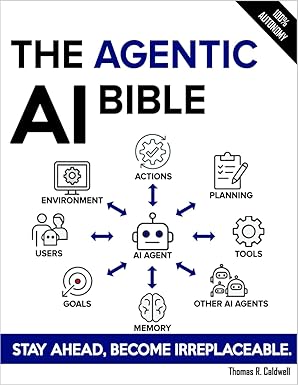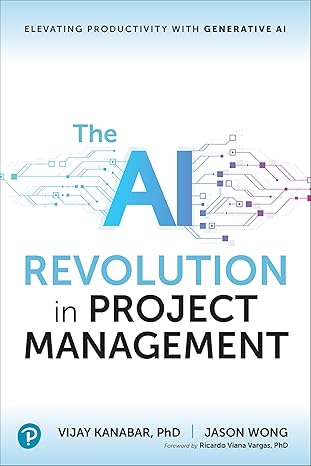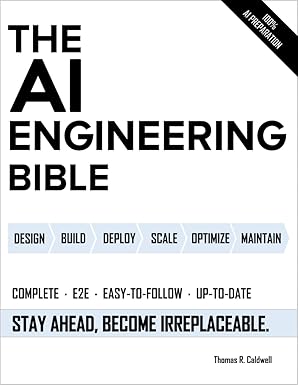Leading the Shift: How C-Level Executives Can Prepare Teams for Agentic Coding Tools

Ad Space
Leading the Shift: How C-Level Executives Can Prepare Teams for Agentic Coding Tools
In early 2025, a mid-sized SaaS company piloted Cline and GitHub Copilot across three engineering teams.
Within 90 days, their pull request throughput jumped by 27% — without a single layoff. The change wasn’t just about adding AI. It was about how leadership framed and rolled out the tools.
This guide is for C-level executives and senior leaders who want to introduce agentic coding tools like Cline, Copilot, and Cursor in a way that excites — not scares — their engineering teams.
Key Takeaways
- Narrative matters more than technology — Engineers fear “replacement” but embrace “augmentation.”
- Start small, measure fast — Use 3–6 month pilots with clear, human-centric metrics.
- Empower champions — Identify early adopters inside engineering to lead by example.
- Guardrails first — Compliance, data security, and code quality processes should be ready before scale-up.
- Show quick wins — Demonstrate productivity gains in weeks, not quarters.
- Communicate often — Transparency builds trust during AI transitions.
Why Agentic Coding Matters Now
Market Pressures
- Talent shortages mean senior engineers are stretched thin.
- Product roadmaps demand faster delivery without sacrificing quality.
- AI-assisted coding tools reduce context switching and manual boilerplate work, freeing engineers for deeper, more creative problem-solving.
Opportunity for Leaders
Agentic coding isn’t about replacing humans — it’s about amplifying human creativity.
Tools like Cline can:
- Generate scaffolding code in minutes
- Suggest bug fixes proactively
- Auto-generate tests based on recent changes
The Six-Step Executive Adoption Framework
1. Vision & Narrative
Before a single license is purchased, define why.
Instead of “We’re adding AI to cut costs,” say:
“We’re bringing in AI tools so you can spend less time on repetitive work and more time solving complex problems.”
2. Pilot Selection
- Pick a low-risk, high-visibility project.
- Limit to one or two small teams.
- Track baseline metrics before AI tools are introduced.
3. AI Champions
Identify 2–3 respected engineers to be AI Champions.
They’ll test workflows, create internal training, and share wins.
4. Guardrails & Compliance
Work with security and legal before rollout to:
- Set rules for AI output usage
- Prevent sensitive data leaks
- Integrate code scanning tools
5. Metrics & Feedback Loops
Measure:
- Time-to-PR
- Lines of boilerplate avoided
- Bug fix turnaround time
- Developer satisfaction (survey)
6. Scale & Iterate
Once KPIs show improvement, expand licenses and training.
Share success stories org-wide.
Communicating With Engineers
| Wrong Message | Right Message |
|---|---|
| “We’re adopting AI to cut the team size.” | “We’re adopting AI to give you back time for creative work.” |
| “This tool will write all your code.” | “This tool will help with scaffolding, tests, and bug detection — but you remain the creative driver.” |
| “Management decided this is the future.” | “We want to run a pilot with your input to shape how AI works here.” |
Productivity Benchmarks
- GitHub Copilot Study (2023): Developers completed tasks 55% faster on repetitive code.
- McKinsey (2024): AI-augmented dev teams saw 20–30% productivity lifts within 6 months.
- Stack Overflow Developer Survey (2024): 70% of developers said AI tools helped them focus on higher-value work.
Practical Demonstrations
cline: "Create an Express.js REST API with endpoints for /users and /orders, connect it to MongoDB, and include basic validation."
def add(a, b):
return a + b
# Copilot Suggestion:
def test_add():
assert add(1, 2) == 3
assert add(-1, 1) == 0
// Original
function getData(data) {
if (data) {
return data;
} else {
return null;
}
}
// Cursor Suggestion
function getData(data) {
return data || null;
}
Culture & Change Management
- Celebrate early wins in all-hands meetings.
- Offer optional “AI Office Hours” for live Q&A.
- Make prompt engineering a skill badge in performance reviews.
Security, Privacy, and Compliance
- Block AI access to sensitive internal APIs unless needed.
- Scan all AI-generated code before merging.
- Keep logs of AI interactions for auditing.
First Pilot Workshop Script
Preparation:
- Choose 1–2 teams.
- Select 1–2 AI tools (e.g., Cline & Copilot).
- Set pilot duration (90 days).
Workshop Agenda:
- Opening Remarks (5 min) — “We’re here to explore how AI can help us spend more time on the fun parts of coding.”
- Live Demo (10 min) — Show AI scaffolding a small feature.
- Hands-On Test (20 min) — Engineers try the tool with a simple task.
- Expectations (10 min) — Explain guardrails and feedback process.
- Q&A (15 min).
Follow-Up:
- Collect feedback via form.
- Share initial wins after week one.
FAQ
Will AI replace our engineers?
No — the best results come from human + AI collaboration.
How do we measure success?
Track both speed and satisfaction metrics.
What skills should we train for?
Prompt engineering, critical code review, AI workflow integration.
Read related guides:
Ad Space
Recommended Tools & Resources
* This section contains affiliate links. We may earn a commission when you purchase through these links at no additional cost to you.
📚 Featured AI Books
OpenAI API
AI PlatformAccess GPT-4 and other powerful AI models for your agent development.
LangChain Plus
FrameworkAdvanced framework for building applications with large language models.
Pinecone Vector Database
DatabaseHigh-performance vector database for AI applications and semantic search.
AI Agent Development Course
EducationComplete course on building production-ready AI agents from scratch.
💡 Pro Tip
Start with the free tiers of these tools to experiment, then upgrade as your AI agent projects grow. Most successful developers use a combination of 2-3 core tools rather than trying everything at once.
🚀 Join the AgentForge Community
Get weekly insights, tutorials, and the latest AI agent developments delivered to your inbox.
No spam, ever. Unsubscribe at any time.



